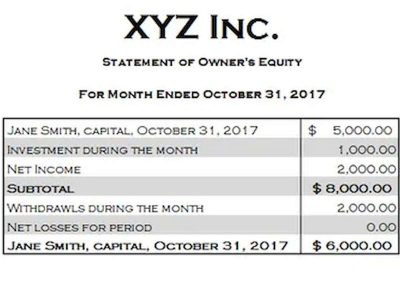
Different law firms may require additional accounts to accommodate the unique financial aspects of their practice areas. For instance, a family law firm might need specific accounts for alimony or child law firm chart of accounts support, while a corporate law firm might need accounts for mergers and acquisitions. Together, these statements show how your law firm is performing financially. The balance sheet documents how the firm is funding business operations between debt and equity.
Thanks for reading CPA Practice Advisor!

A hierarchical structure based on account types is crucial when creating a chart of accounts for a law firm. By categorizing accounts into assets, liabilities, revenue, and expenses, firms can generate accurate financial statements and reports efficiently. This structure enables easy identification and aggregation of data, providing a comprehensive overview of the firm’s financial health.

Why Is a Chart of Accounts Important for Lawyers
- When assembling your chart, speak with an accounting expert who is experienced with law firms and can provide a law firm chart of accounts sample.
- The bank then forwards the interest earned on IOLTA accounts to the state bar.
- If your law firm generally has in excess of one Matter per Client, it is recommended that you use Jobs.
- The rules vary by state, but at a minimum, attorneys are required to maintain “complete records.” The American Bar Association publishes a list of recordkeeping requirements by state.
- Monies in the account can then be reallocated to the Reimbursed Client Cost or income account once the money is earned.
A law firm chart of accounts also needs to meet your local state bar association jurisdiction standards by tracking all funds in trust accounts—and interest accumulated on those accounts. This listing also provides a structure for correctly managing funds between operating accounts and pooled trust accounts. The legal profession is one of those; in fact, creating and maintaining the chart of accounts for law firms aren’t just suggestions; they are requirements. State bar association rules require law practices to keep meticulous records so there is no impropriety when dealing with Interest on Lawyers’ Trust Accounts (IOLTA), or any other trust accounts. The rules vary by state, but at a minimum, attorneys are required to maintain “complete records.” The American Bar Association publishes a list of recordkeeping requirements by state.
- These funds are then used for charitable causes, such as access to justice services.
- If you do not keep track of these and the chart of accounts, expenses can be left out and never get collected.
- Every item will now point to a Suspense general Retainer account for both income as well as expense.
- Typically it is not necessary to have more than one General Retainer account and not likely a good idea.
- Set up an Item within the Item list for every income type, and buy no rx cialis online for General Retainer and Reimbursed Client Costs when appropriate.
Benefits of using Clio Manage with QuickBooks Online
CPA Practice Advisor is the definitive technology and practice management resource for accounting and tax professionals. CPA Practice Advisor has products that deliver powerful content to you in a variety of forms including online, email and social media. Take the time to establish a robust Chart of Accounts with PageLightPrime—it’s an investment in the future success of your legal practice. Beyond its foundational benefits, a Chart of Accounts can significantly enhance your practice’s ability to analyze financial data and generate meaningful reports. If you’re uncertain about creating a Chart of Accounts, consult with a financial or legal professional who can provide guidance and ensure your COA aligns with legal requirements. Intuitive legal practice features to help large-sized firms attain peak efficiency.
Clearly label these accounts and record all transactions accurately to ensure compliance with ethical and legal requirements. For instance, if a law firm experiences a decline in revenue or an unexpected expense, it may be able to sell assets in order to generate cash and compensate for the losses. Likewise, if the law firm experiences a period of low cash flow, it may be able to use its assets as collateral to secure a line of credit or other form of short-term financing. In this article, we will explore the Chart of Accounts used in legal accounting, including assets, liabilities, equity, revenue, and expenses. A tailored chart of accounts helps law firms adhere to IOLTA trust accounting standards and legal requirements.
Once all the above-mentioned accounts have been bookkeeping and payroll services added to the Chart of accounts, it is easy for law firms to enter transactions accordingly into QuickBooks Online. The data needed for state reporting including the three-way reconciliation reports will be easily found in the balance sheet and profit and loss statement. You’ll also need separate ledgers for tracking all funds in trust accounts and interest accumulated on those accounts, as per legal requirements. This is known as Interest on Lawyers Trust Accounts (IOLTA) and listed as a segregated liability. A chart of accounts holds immense significance for any law firm, serving as a fundamental tool for effective financial management.
- When looking at the importance of solid accounting, you’re really talking about looking at financial data on a regular basis.
- Make sure to check with your local state bar association for specific standards about trust accounts and IOLTA.
- Documenting billable hours and expenses ensures clients are appropriately charged for services rendered.
- Lawyers, whether operating as solo practitioners or part of a law firm, must maintain a clear and organized financial structure to manage their accounts effectively.
- Although you may not have studied accounting/bookkeeping in college, it’s important to understand your firm’s financial big picture to maximize your business profit and ensure compliance.
- As detailed in our guide to QuickBooks trust accounting, you can set up an advanced client cost account in QuickBooks Online.
- This means setting up your chart to include as much relevant information as possible.
- But, you’ll likely need integrated, lawyer-specific tools to manage and reconcile client advances and trust accounts.
- Data analytics enable firms to benchmark performance against industry standards and identify areas for improvement.
- If you do not keep track of these, expenses can fall through the cracks and never get collected.
- Included is a law firm chart of accounts sample and basic template, and tips to help you create an accurate and effective chart of accounts for your firm.
- This makes determining when and how to record revenue critical to accurately reflect work performed and value delivered to clients.
- A soft cost is a cost you need to charge a client for, however you do not actually write them a check for the cost.
If you plan to use QuickBooks Accounts Payable (A/P) for your Trust transactions, you should rename the AP account to “Operating A/P” so you can easily tell it apart from Trust A/P. Another resource to check is the State Bar of Georgia’s sample chart of accounts for lawyers. Reference it as a guide and adjust as needed to reflect your firm’s financial situation. If your chart of accounts is not set up correctly, your transactions will not balance and the records for each account could be inaccurate.
Services

Metrics like profit per partner, revenue per lawyer, and utilization rates reveal productivity and profitability trends. Data analytics enable firms to benchmark performance against industry online bookkeeping standards and identify areas for improvement. These practices align financial goals with strategic objectives, driving sustainable growth.

Fortune 500 companies and top law firms choose Burford to fund and monetize their commercial litigation and arbitration. Efficient billing and invoicing practices optimize cash flow and strengthen client relationships. A streamlined billing cycle minimizes delays and errors that could lead to payment disputes or strained interactions.
بیشتر بخوانید







